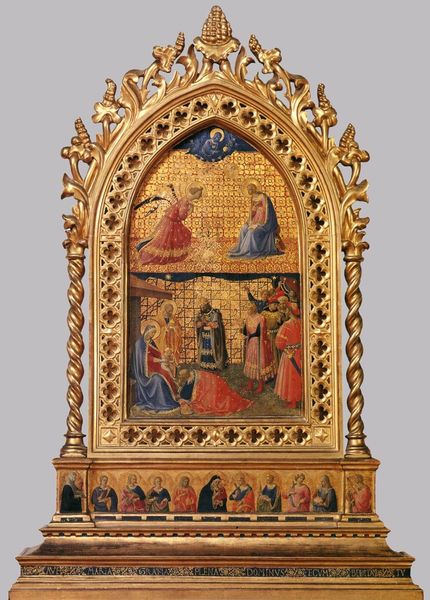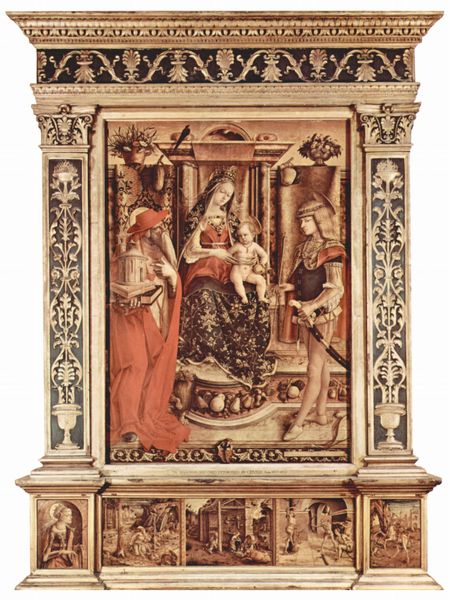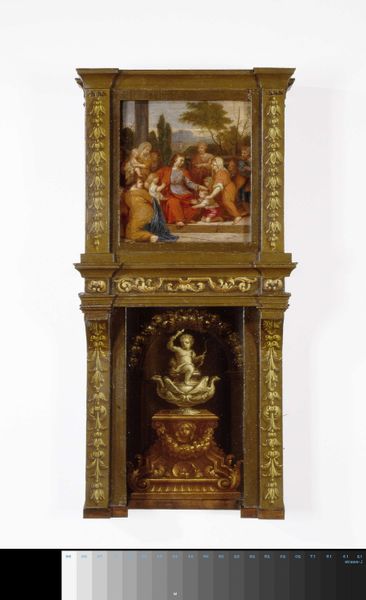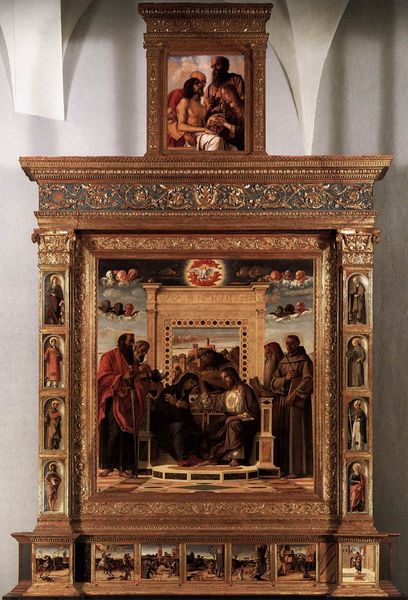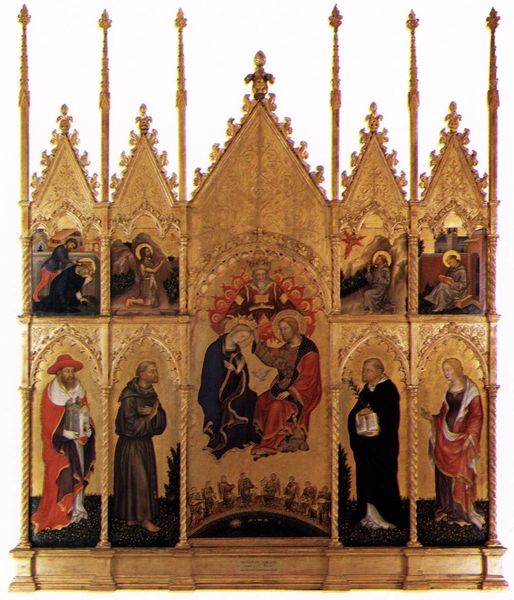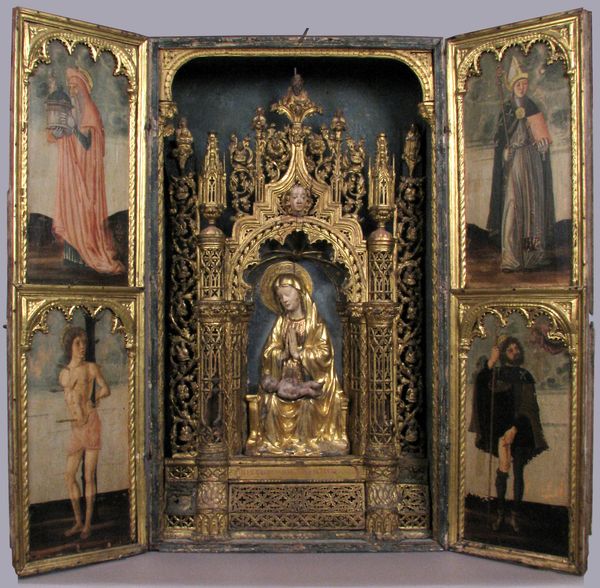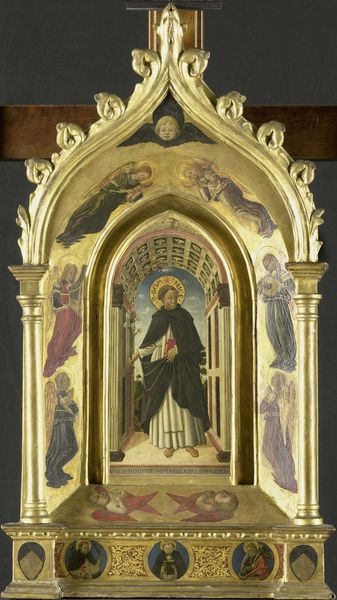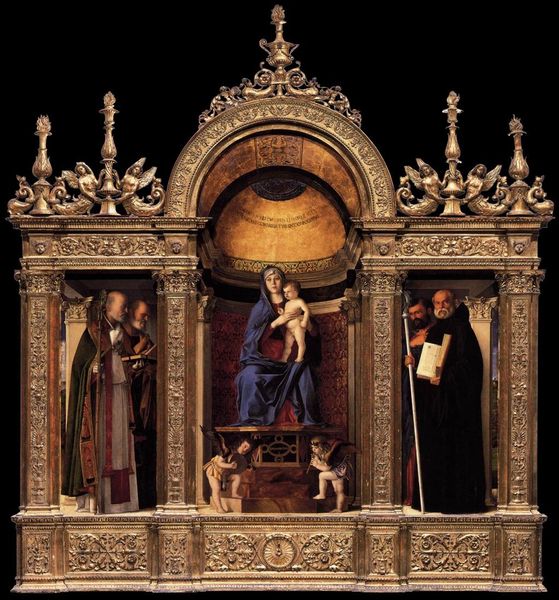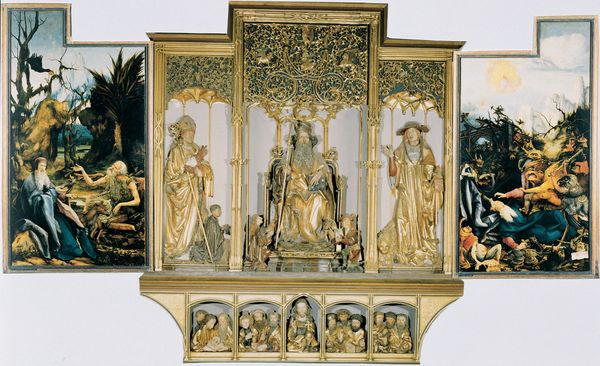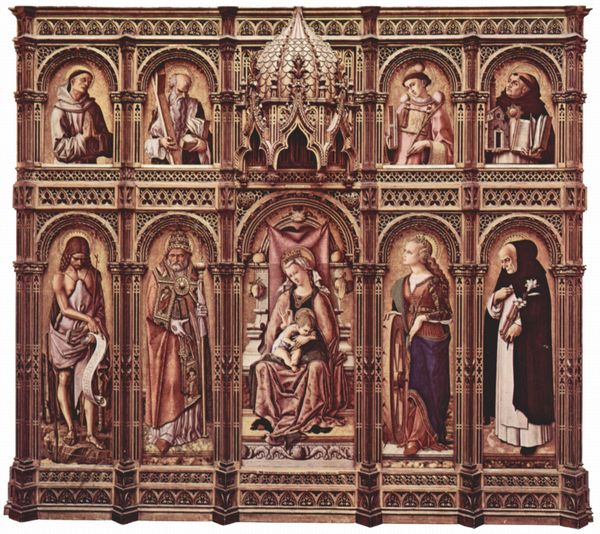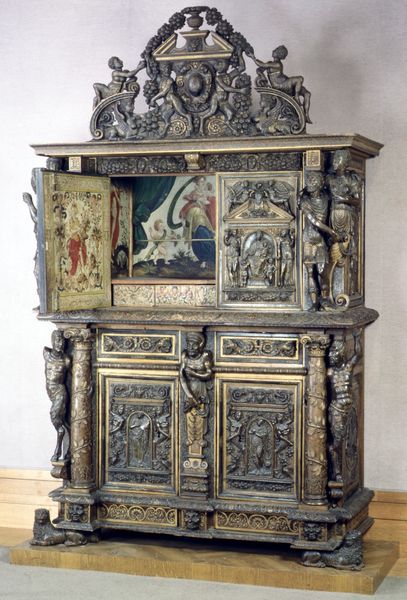
panel, carving, tempera, painting, gilding
#
portrait
#
high-renaissance
#
panel
#
carving
#
allegory
#
tempera
#
painting
#
sculpture
#
holy-places
#
perspective
#
figuration
#
historic architecture
#
traditional architecture
#
classicism
#
gilding
#
history-painting
#
italian-renaissance
#
statue
Copyright: Public domain
Curator: Let’s examine this impressive "Tabernacle of the Sacramento," attributed to Francesco Botticini. What strikes you first about its appearance? Editor: Well, immediately, it's the weight of the gold. The intense gilding gives it a rather imposing, sacred presence. There's such elaborate detail. Curator: Precisely. The gilding serves to elevate the very structure of the tabernacle. We see tempera and oil paint applied to the wood panel, but the ornate architectural features carved in high relief – notice the twisting columns and complex friezes – are integral. Observe how the structure divides into three distinct sections. Each featuring narrative or symbolic elements. Editor: And those two figures on either side? They certainly carry symbolic weight. Their positioning around the central empty space almost feels like they’re guarding some hidden knowledge. They look like statues, like Saint Peter holding the key to the church... Curator: They function in the composition both as supporting elements and also contribute iconographic meaning. The whole is infused with history. The symbolic function merges within its formal presentation to make a didactic whole. Editor: Thinking about historical continuity, it fits squarely within a lineage of reliquaries and sacred objects meant to inspire reverence. The scenes on the base seem directly pulled from religious texts, meant to provide moral guidance. Curator: The artist utilizes classicizing devices - the balanced symmetry and figuration reminiscent of Roman sculpture. I think this work has a more pronounced classical aspect when you understand the material presence of such tabernacles at the time of its creation. Editor: Yes, there is clearly an attempt at recontextualizing antique grandeur in a religious artwork to create a cultural memory. This work becomes part of the religious rituals of Botticini’s time. Curator: Its intricate composition rewards attentive viewing. Thank you for revealing Botticini's work. Editor: My pleasure; it’s been a lesson in how structure reinforces symbolism, ensuring enduring potency.
Comments
No comments
Be the first to comment and join the conversation on the ultimate creative platform.
